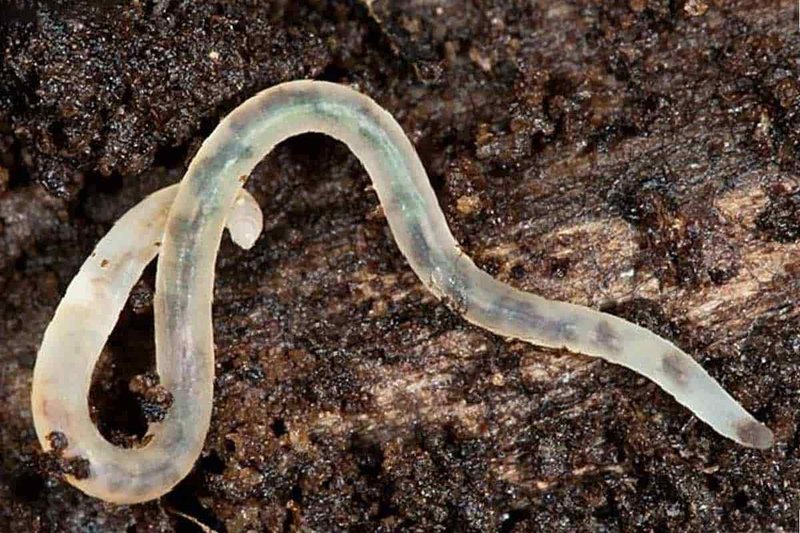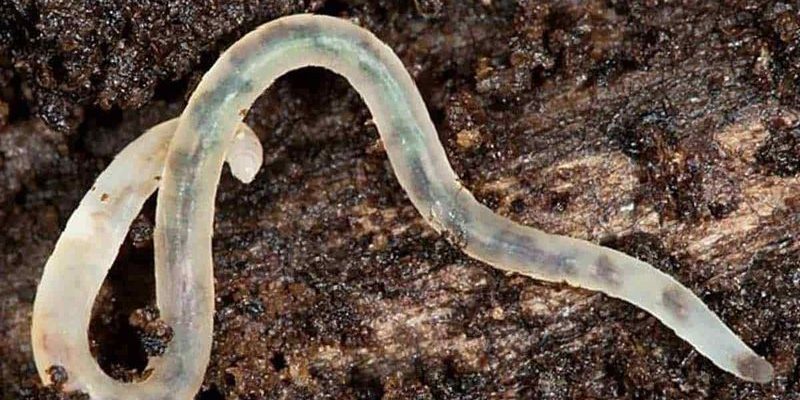
You might be wondering, what exactly does that mean? Well, think of Grindal worms as nature’s canaries in a coal mine. Just like those canaries once alerted miners to dangers, these worms can show us how well our ecosystems are doing. By studying them, we gain insights into soil health, pollution levels, and the overall balance of our environments.
So, let’s dive deeper into the world of Grindal worms and explore how they contribute to environmental monitoring and bioindication.
What Are Grindal Worms?
Grindal worms, also known as *Enchytraeus buchholzi*, are small, white worms that thrive in damp, organic-rich environments. They typically grow to about 1–3 inches long and are soft-bodied, making them easy to handle and popular among fishkeepers as a nutritious food source. You might find them wriggling in compost heaps or under leaf litter, playing a crucial role in breaking down organic matter.
These worms reproduce quickly, which is another reason they’re ideal for monitoring. A healthy population can quickly indicate good environmental conditions. If you’re raising them, you’ll notice how they multiply and thrive when their habitat is rich in nutrients and moisture. This ability makes them excellent bioindicators.
When we think about using Grindal worms for monitoring, it’s essential to understand what makes them tick. They are sensitive to changes in their environment, such as abrupt changes in moisture levels, pH, and temperature, meaning their health can provide valuable data on soil quality.
The Importance of Bioindicators
You might be wondering why bioindicators like Grindal worms matter so much. In a nutshell, they provide a snapshot of an ecosystem’s health without requiring complex technologies or extensive resources. Bioindicators are organisms that show how healthy an environment is based on their presence, absence, or overall health.
Here’s how it works: If you start noticing fewer Grindal worms in a specific area, it could signal a problem. Maybe the soil has been contaminated with pesticides or heavy metals, or perhaps there’s been a significant shift in moisture content. By assessing the population and health of these worms, scientists can quickly identify potential ecological issues.
Beyond just being the “canaries” of the soil, bioindicators can also help us understand the long-term effects of human activities on the environment, like urbanization and agriculture. Essentially, they help bridge the gap between human actions and environmental consequences.
How Grindal Worms Help in Soil Health Assessment
When it comes to assessing soil health, Grindal worms are like little detectives working to uncover clues about the ecosystem. They not only aid in breaking down organic material, enriching the soil, but their presence or absence can reveal a lot about the soil’s condition.
For example:
- High population: A thriving population of Grindal worms suggests high nutrient levels and healthy, aerated soil, which is great for plant growth.
- Low population: A sudden drop in their numbers might indicate pollution, changes in soil pH, or insufficient moisture levels.
Monitoring the health of these worms can provide insights for farmers looking to optimize their crop yields. If a farmer notices a decline in Grindal worms in their fields, it could prompt them to investigate soil conditions and make adjustments before the problem escalates.
Moreover, researchers can utilize these worms to test soil samples in various locations, collecting data that can help map out environmental health trends over time.
Grindal Worms in Pollutant Detection
Another fascinating aspect of using Grindal worms for environmental monitoring is their sensitivity to pollutants. Just as some animals can sense changes in the air quality before us, Grindal worms react to soil pollutants.
When exposed to various pollutants, their survival rates, reproduction, and behavior can change. For example, adding heavy metals or pesticides to soil can lead to noticeable declines in their populations. Researchers often measure how these worms react to different contaminants to gauge how harmful substances affect the ecosystem.
By understanding these reactions, scientists can develop better strategies to mitigate pollutants and protect our ecosystems. It’s like having a living alarm system that not only alerts us to danger but also helps pinpoint what’s causing the trouble.
Grindal Worms vs. Other Bioindicators
While Grindal worms are excellent bioindicators, they are not the only ones out there. Other organisms, like earthworms, may also signal soil health and environmental conditions. So, how do Grindal worms stack up against these alternatives?
Here’s a quick comparison:
| Bioindicator | Advantages | Disadvantages |
|---|---|---|
| Grindal Worms | High reproduction rate, sensitive to pollutants | Limited to specific environments (moist soils) |
| Earthworms | Inhabit various soils, indicate larger ecosystem health | Longer lifespan, slower reproduction |
Grindal worms might be more suitable for smaller-scale studies, like testing home gardens or localized areas, while earthworms can give insights into broader environmental health. Ultimately, the choice depends on the specific monitoring needs and the environment being assessed.
Practical Applications of Grindal Worms
Using Grindal worms for environmental monitoring opens doors to various practical applications, making them valuable tools for both researchers and everyday gardeners. For instance, gardeners can use them to gauge the health of their soil, adjusting their practices based on the worm population they observe.
In research settings, scientists can set up controlled experiments using Grindal worms to study the effects of different pollutants or soil treatments. By comparing the health and activity of these worms under various conditions, researchers can develop guidelines for improving soil management practices.
Moreover, educational programs can incorporate Grindal worms into lessons about ecology and soil health. This hands-on approach can engage students and foster a deeper understanding of environmental science, highlighting the importance of even the smallest organisms.
Getting Started with Grindal Worms
If you’re considering using Grindal worms for your own monitoring or educational purposes, it’s quite simple to get started. Here’s how you can raise and utilize them effectively:
1. Setup Your Habitat: Create a damp, organic-rich environment. You can use a plastic container with drainage holes and fill it with a mix of soil, peat, and organic matter.
2. Introduce the Worms: Obtain a small culture of Grindal worms from a reliable supplier. Just a handful can quickly multiply in the right conditions.
3. Monitor Conditions Regularly: Keep an eye on moisture levels, temperature, and food supply. Regularly check the worm population to assess soil health.
4. Document Changes: Track any changes over time, especially if you experiment with different materials or fertilizers. This helps you understand what works best for your particular environment.
With a little effort and attention, you can easily use Grindal worms to gain insights into the health of your soil and surrounding environment.
In conclusion, Grindal worms are not just fish food; they’re valuable allies in our quest to monitor and protect the environment. Their sensitivity to changes in soil health and pollution levels makes them fantastic bioindicators. Whether you’re a gardener, a scientist, or just someone interested in ecology, harnessing the power of Grindal worms can lead to a deeper understanding of our planet’s health.
So, the next time you think about these little worms, remember they are telling us stories—stories of our soils, our ecosystems, and the delicate balance we must strive to maintain.

